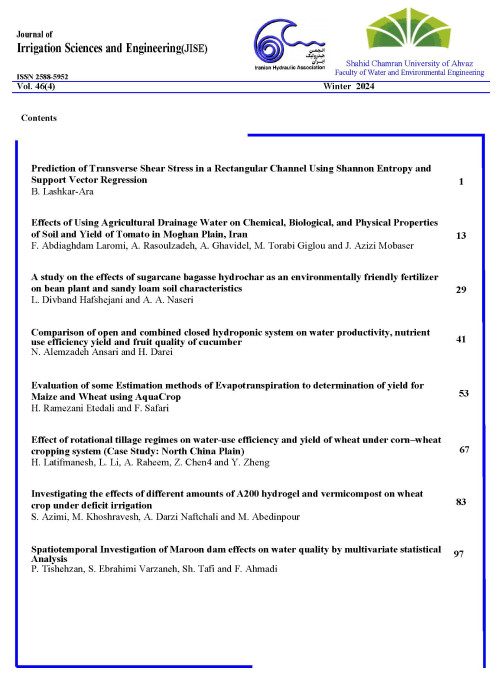Assessment of Groundwater Crisis in Arid and Semiarid Areas (Case Study: Jaghin and Tokahor Plain)
Groundwater represents one of the largest stocks of accessible freshwater and accounts for about one-third of freshwater consumption globally (Famiglietti, 2014). Overpumping the groundwater, especially in arid and semiarid areas, has had negative effects on the environment. Recognizing the productivity of water and soil resources is the first step toward planning and managing the increasing optimum operation of these resources. Water resource management, especially that of groundwater, is very important in the arid and semiarid regions (Moslemi, 2015). Water Crisis is one of the most important environmental hazards that have social and economic consequences. Now we have a serious challenge in countries that they have been overpumping groundwater, which further extraction from groundwater table has caused a decrease in the groundwater level in most areas in the world (Moslemi,2015). Statistics in world resources show that groundwater decreasing process has hard conditions. The index of the water crisis in Iran, considering its presence in a dry and semi-arid region, is more unfavorable than the average level in the world, in other words, up to one percent of world populations live in Iran while its portion from sweet water resources is just 0.36 %. On the other hand, all the world just uses 45% of the resources, but Iran has used 66% of its saved sweet water (Khorani and Khajeh, 2014). In population program and their environment national organization, Iran is at the 100th place on the list of countries that their rehabilitation of sweet water per person is low. According to international standards, Iran will soon be in a state of a scarcity of water and will be in a group of countries facing a water crisis (Bargahi and Mousavi, 2007). Research shows that from 609 aquifers in Iran, 300 aquifers are in critical conditions and deemed among forbidden regions for over-extraction and another 40 aquifers are determined to be in critical conditions (Moslemi and Darvishi, 2018). So, in these conditions, we must study more about Iran’s aquifers; although with an exact prediction of groundwater table changes, we can use that in trust water preparation planning and also, in water resource management. Jaghin and Tokahor aquifers in the southeast of Iran are in arid climate conditions, and during recent years, it has been facing a low drop of water table. If we want to have a good decision and correct the planning in management and the extraction methods from these aquifers, it is necessary that the underground water in these plains be investigated in a long period and the complete management solutions be determined. Our goal in this study is investigating the water crisis that happened in Jaghin and Tokahor aquifers and its causing factors. We hope that this project will be one of the important steps for attracting attention to the water crisis in this case study.
- حق عضویت دریافتی صرف حمایت از نشریات عضو و نگهداری، تکمیل و توسعه مگیران میشود.
- پرداخت حق اشتراک و دانلود مقالات اجازه بازنشر آن در سایر رسانههای چاپی و دیجیتال را به کاربر نمیدهد.



